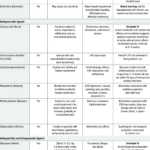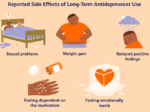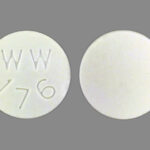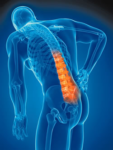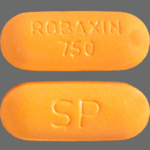Flexeril (cyclobenzaprine) is a muscle relaxant. It works by blocking nerve impulses (or pain sensations) that are sent to your brain.
Flexeril is used together with rest and physical therapy to treat skeletal muscle conditions such as pain or injury.
Cyclobenzaprine is an FDA-approved medication prescribed as an adjunct to rest for the treatment of muscle spasms associated with acute and painful musculoskeletal conditions. It belongs to a group of medications known as tricyclic antidepressants, which have a range of therapeutic applications.
Indications and Usages for Flexeril (Cyclobenzaprine):
FLEXERIL is indicated as an adjunct (a supplementary treatment) to rest and physical therapy for the relief of muscle spasm associated with acute, painful musculoskeletal conditions. The therapeutic benefits are evidenced by the alleviation of muscle spasm and its related signs and symptoms, including pain, tenderness, restricted motion, and limitations in activities of daily living.
It’s important to note that FLEXERIL should be utilized for short durations, typically up to two or three weeks. This is because there is insufficient evidence to support its effectiveness in prolonged use, and muscle spasms related to acute, painful musculoskeletal conditions typically resolve within a short timeframe. Therefore, extended therapy is rarely necessary.
FLEXERIL is not an effective treatment for spasticity associated with cerebral or spinal cord disease, nor is it suitable for use in children with cerebral palsy. Its therapeutic use is specifically intended for the relief of muscle spasms related to acute, painful musculoskeletal issues.
Cyclobenzaprine, a tricyclic amine salt, primarily operates within the central nervous system (CNS) as a depressant, effectively reducing muscle hyperactivity. While it’s recognized for its role in alleviating muscle spasms, tricyclic antidepressants like cyclobenzaprine also have diverse applications, including:
- Treatment of Depression: Tricyclic antidepressants are prescribed to manage depressive disorders.
- Neuropathic Pain: They are employed in the treatment of neuropathic pain, which arises from nerve damage or dysfunction.
- Migraine Prophylaxis: Tricyclic antidepressants may be used to prevent recurring migraine headaches.
- Attention Deficit Hyperactivity Disorder (ADHD): These medications have shown potential in managing ADHD symptoms.
- Muscle Relaxation: Cyclobenzaprine and similar drugs possess muscle relaxation properties, which make them effective in addressing muscle-related conditions.
This activity involves a comprehensive review of cyclobenzaprine, encompassing its mechanism of action, adverse event profile, toxicity, dosing guidelines, pharmacodynamics, and monitoring protocols. It is intended to provide valuable insights to members of the healthcare team who may prescribe or come into contact with patients using cyclobenzaprine.
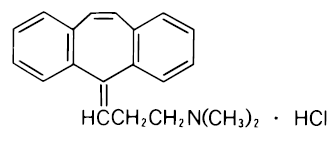 |
FLEXERIL 5 mg (Cyclobenzaprine HCl) is supplied as a 5 mg tablet for oral administration.
FLEXERIL 10 mg (Cyclobenzaprine HCl) is supplied as a 10 mg tablet for oral administration.
FLEXERIL 5 mg (Cyclobenzaprine HCl) tablets contain the following inactive ingredients: lactose hydrous, pre-gelatinized starch, corn starch, magnesium stearate, hydroxypropyl cellulose, hypromellose, titanium dioxide, Yellow D&C #10 Aluminum Lake HT, Yellow FD&C #6 Aluminum Lake, and carnauba wax.
FLEXERIL 10 mg (Cyclobenzaprine HCl) tablets contain the following inactive ingredients: lactose hydrous, pre-gelatinized starch, corn starch, magnesium stearate, hydroxypropyl cellulose, hypromellose, titanium dioxide, yellow iron oxide, and carnauba wax.
Warnings
Cyclobenzaprine’s Relationship to Tricyclic Antidepressants and Potential Interactions:
Cyclobenzaprine is closely related to tricyclic antidepressants, such as amitriptyline and imipramine. In short-term studies for conditions other than the relief of muscle spasm associated with acute musculoskeletal issues, and typically at doses somewhat higher than those recommended for muscle spasm, some of the more serious central nervous system reactions associated with tricyclic antidepressants have been observed (please refer to the WARNINGS section below and ADVERSE REACTIONS).
Tricyclic antidepressants have been known to trigger arrhythmias (abnormal heart rhythms), sinus tachycardia (rapid heart rate), and prolongation of conduction time, which can lead to conditions like myocardial infarction (heart attack) and stroke.
Furthermore, it’s important to be aware that FLEXERIL may enhance the effects of alcohol, barbiturates, and other central nervous system depressants. This means that when taken in combination with these substances, there may be an increase in the sedative effects, potentially leading to increased drowsiness or impairment. Therefore, caution should be exercised when using FLEXERIL alongside such substances.
Precautions
Important Information about FLEXERIL (Cyclobenzaprine) Use:
1. Caution in Specific Patient Populations:
- Due to its atropine-like action, FLEXERIL should be used cautiously in individuals with a history of urinary retention, angle-closure glaucoma, increased intraocular pressure, and those currently taking anticholinergic medications.
2. Impaired Hepatic Function:
- In patients with impaired liver function, the concentration of cyclobenzaprine in the bloodstream may be increased. Such patients are generally more sensitive to drugs with potential sedating effects, including cyclobenzaprine. Therefore, FLEXERIL should be used cautiously in individuals with mild hepatic impairment, starting with a 5 mg dose and gradually increasing it. However, due to a lack of data for patients with more severe hepatic insufficiency, the use of FLEXERIL is not recommended in those with moderate to severe impairment.
3. Information for Patients:
- Patients taking FLEXERIL should be informed that when used in conjunction with alcohol or other central nervous system depressants, it may impair mental and/or physical abilities necessary for tasks like operating machinery or driving a vehicle.
- In elderly patients, the frequency and severity of adverse events associated with cyclobenzaprine use, whether alone or with concomitant medications, are increased. Therefore, in elderly patients, FLEXERIL should be initiated with a 5 mg dose and titrated slowly upwards.
4. Drug Interactions:
- FLEXERIL can have life-threatening interactions with monoamine oxidase (MAO) inhibitors, and its use is contraindicated when patients are taking MAO inhibitors.
- FLEXERIL may enhance the effects of alcohol, barbiturates, and other central nervous system depressants.
- Tricyclic antidepressants, like cyclobenzaprine, can interfere with the antihypertensive effects of guanethidine and similar compounds.
- Tricyclic antidepressants may also increase the risk of seizures in patients taking tramadol.
It’s crucial for healthcare providers and patients to be aware of these considerations to ensure the safe and effective use of FLEXERIL.
5.Carcinogenesis, Mutagenesis, and Impairment of Fertility:
- In rats exposed to FLEXERIL for up to 67 weeks at doses approximately 5 to 40 times the maximum recommended human dose, certain liver changes were observed, including pale and sometimes enlarged livers. There was also a dose-related occurrence of hepatocyte vacuolation with lipidosis. In the higher dose groups, these microscopic changes were observed after 26 weeks and even earlier in rats that did not survive for 26 weeks. At lower doses, these changes were not apparent until after 26 weeks.
- In extended studies of 81 weeks in mice and 105 weeks in rats, cyclobenzaprine did not affect the onset, incidence, or distribution of neoplasia (the formation of tumors).
- In reproductive studies conducted in rats, mice, and rabbits at doses up to 20 times the human dose, cyclobenzaprine did not have any adverse effects on fertility or harm to the developing fetus. There is a lack of adequate and well-controlled studies in pregnant women, so the use of this drug during pregnancy should be considered only when clearly needed.
6.Nursing Mothers:
- The excretion of cyclobenzaprine in human breast milk is not well-established. Given its close relationship to tricyclic antidepressants, some of which are known to be excreted in human milk, caution is advised when administering FLEXERIL to nursing women.
7.Pediatric Use:
- The safety and effectiveness of FLEXERIL in pediatric patients below 15 years of age have not been established.
8.Use in the Elderly:
- In elderly patients, the plasma concentration of cyclobenzaprine is increased. Elderly individuals may also be at greater risk for central nervous system (CNS) adverse events like hallucinations and confusion, as well as cardiac events that could lead to falls or other related issues. There is also an increased potential for drug-drug and drug-disease interactions in the elderly. For these reasons, FLEXERIL should be used in elderly patients only when clearly necessary. In such cases, FLEXERIL should be initiated with a 5 mg dose and titrated slowly upwards.
Mechanism of Action
Cyclobenzaprine is a centrally acting skeletal muscle relaxant with structural similarities to tricyclic antidepressants. Its therapeutic action involves alleviating skeletal muscle spasms originating locally, all while preserving normal muscle function. Research has demonstrated its ability to reduce hyperactivity in skeletal muscles, primarily within the central nervous system located in the brain stem.
While cyclobenzaprine does not have a direct impact on skeletal muscles or the neuromuscular junction, it appears to exert some influence within the spinal cord, contributing to its overall muscle relaxant properties. Scientific evidence suggests that the net effect of cyclobenzaprine involves a reduction in tonic somatic motor activity, affecting both gamma (γ) and alpha (α) motor systems. Recent studies have also pointed to cyclobenzaprine acting as a receptor antagonist, particularly at the 5-HT2 receptor, which plays a role in its antispasmodic effects.
In clinical practice, cyclobenzaprine proves effective in relieving muscle spasms, alleviating localized pain and tenderness, and enhancing the range of motion in cases of acute, painful musculoskeletal conditions. However, it’s important to note that while cyclobenzaprine is considered an antispasmodic drug, it is not suitable for treating spasticity associated with cerebral or spinal cord pathology or for children with cerebral palsy. Its therapeutic focus is on the management of muscle spasms arising from acute musculoskeletal issues.
Pharmacokinetics of Cyclobenzaprine
Absorption: The time it takes to reach the peak concentration of cyclobenzaprine in the plasma (Tmax) is approximately 7 to 8 hours for the extended-release formulation, and around 4 hours for the immediate-release formulation. Steady-state plasma concentrations are typically achieved within 3 to 4 days. The presence of food can enhance both the extent (AUC) and the speed of cyclobenzaprine absorption.
Distribution: Cyclobenzaprine exhibits a high degree of binding to plasma proteins, with approximately 93% of the drug being bound. It primarily binds to alpha-1 glycoprotein, a protein that increases in concentration during inflammatory conditions.
Metabolism: Cytochrome P450 enzymes, including CYP3A4, CYP31A2, and CYP2D6, are responsible for metabolizing cyclobenzaprine.
Excretion: Cyclobenzaprine follows first-order pharmacokinetics. The average elimination half-life for the immediate-release formulation is approximately 18 hours (with a range of 8 to 37 hours), while for the extended-release formulation, it is approximately 32 hours. The primary route of excretion for cyclobenzaprine is through the kidneys, primarily in the form of glucuronides.
Cyclobenzaprine Administration and Considerations for Specific Patient Groups
Administration: Cyclobenzaprine is typically administered orally and is available in immediate-release tablets of 5 milligrams, 7.5 milligrams, and 10 milligrams, as well as extended-release capsules of 15 milligrams and 30 milligrams. It is commonly prescribed to be taken three times daily, with the maximum recommended daily dose being 30 milligrams. When using the extended-release formulation, it should be taken at the same time each day. The capsule can be swallowed whole or, alternatively, its contents may be sprinkled onto a tablespoon of applesauce for immediate consumption without chewing the granules. Patients should rinse their mouth to ensure complete ingestion of all contents.
Use in Specific Patient Populations:
Patients with Hepatic Impairment: In patients with mild hepatic insufficiency, steady-state plasma concentrations of cyclobenzaprine are approximately twice as high as those in healthy individuals. Therefore, caution is advised when using cyclobenzaprine in patients with mild hepatic impairment. The usual starting dose should be 5 milligrams, and if necessary, titration upwards can be considered. However, cyclobenzaprine is not recommended for patients with moderate to severe hepatic impairment due to the lack of clinical data and safety concerns.
Patients with Renal Impairment: While the manufacturer’s product information does not specify dose adjustments for renal impairment, the potent anticholinergic side effects, sedation, and increased fracture risk associated with cyclobenzaprine suggest that its use should be avoided in individuals with chronic kidney disease, particularly in elderly patients (as per the American Geriatric Society’s Beers criteria).
Pregnancy Considerations: Although animal reproduction studies indicate the safety of cyclobenzaprine, there is a lack of clinical data regarding its use during human pregnancy and its potential outcomes. Therefore, cyclobenzaprine should only be used during pregnancy if deemed necessary.
Breastfeeding Considerations: Cyclobenzaprine is found in extremely low amounts in breast milk. If it is necessary for the mother to take cyclobenzaprine, breastfeeding can generally continue with caution. However, close monitoring of the infant is recommended, especially for signs of sedation and developmental milestones. This caution is particularly important for neonates, preterm infants, and when using other sedating medications concurrently.
Dosage and Administration of FLEXERIL (Cyclobenzaprine)
- The typical recommended dose for most patients is 5 mg of FLEXERIL three times a day.
- Depending on the individual patient’s response to the medication, the dose may be increased to 10 mg taken three times a day.
- It is important to note that the use of FLEXERIL for longer durations than two or three weeks is generally not recommended.
Patients should adhere to the prescribed dosage and duration of treatment as directed by their healthcare provider. Any changes to the dosage or treatment plan should be discussed with a healthcare professional.
Cyclobenzaprine Side Effects
Cyclobenzaprine may cause side effects. Tell your doctor if any of these symptoms are severe or do not go away:
- dry mouth
- dizziness
- nausea
- constipation
- heartburn
- extreme tiredness
If you experience any of the following symptoms, call your doctor immediately:
- skin rash
- hives
- swelling of the face or tongue
- difficulty breathing or swallowing
- irregular or fast heart rate
- chest pain
If you experience a serious side effect, you or your doctor may send a report to the Food and Drug Administration’s (FDA) MedWatch Adverse Event Reporting program online (http://www.fda.gov/Safety/MedWatch) or by phone (1-800-332-1088).
Cyclobenzaprine Overdose
Cyclobenzaprine shares structural and pharmacological similarities with tricyclic antidepressants, and in cases of overdose, it primarily affects the fast-acting sodium channels within the cardiac conduction system. This can lead to cardiac toxicity characterized by the prolongation of cardiac depolarization, manifesting as QRS widening on electrocardiograms. Additionally, cyclobenzaprine may lower the seizure threshold by interfering with chloride conductance on the GABA receptor.
A retrospective study based on data from five regional poison centers between 1989 and 1993 suggested that cyclobenzaprine in toxic doses less than 1000 mg does not typically result in life-threatening neurotoxicity or cardiotoxic dysrhythmias, which are commonly associated with traditional tricyclic antidepressants. However, there are case reports of cyclobenzaprine overdose leading to fatalities, including instances where elevated levels of the drug were found in postmortem evaluations of patients.
The most common effects observed with cyclobenzaprine overdose are drowsiness and rapid heartbeat (tachycardia). Rare but potentially severe consequences of overdose include cardiac arrest, cardiac dysrhythmias, severe drop in blood pressure (hypotension), seizures, and neuroleptic malignant syndrome. Electrocardiogram changes, particularly in the QRS axis or width, are important indicators of cyclobenzaprine toxicity.
In summary, for ingestions of less than 100 mg, treatment beyond gastrointestinal decontamination (if needed) is generally unnecessary. Cyclobenzaprine does not typically cause life-threatening cardiovascular or neurological effects at doses below 1000 mg, and severe toxicity, such as arrhythmias, hypotension, and seizures, tends to occur at doses exceeding 1000 mg.
However, although rare, fatalities can occur with cyclobenzaprine overdosage (>1000 mg). Managing such overdoses is complex, and healthcare providers should contact a poison control center for the most up-to-date treatment information.
Management of Cyclobenzaprine Overdose:
- General Measures: Ensure the patient’s airway, breathing, and circulation are stable.
- Cardiac Monitoring: Obtain an electrocardiogram (EKG) and initiate cardiac monitoring to detect and manage potential arrhythmias.
- Airway and Intravenous Access: Protect the patient’s airway if necessary, and establish an intravenous line for medication administration.
- Gastrointestinal Decontamination: Consider gastric lavage (stomach pumping) followed by activated charcoal to reduce further absorption.
- Serum Alkalinization: If the EKG shows QRS prolongation, consider serum alkalinization using sodium bicarbonate.
- Dysrhythmia Management: Dysrhythmias that do not respond to sodium bicarbonate and hyperventilation may require treatment with medications such as phenytoin, lidocaine, or bretylium.
- CNS Depression: In patients with significant central nervous system depression, early intubation may be necessary to prevent sudden deterioration.
- Seizure Control: Manage seizures with benzodiazepines, and if these are ineffective, consider other anticonvulsants like phenobarbital or phenytoin.
- Physostigmine Use: If appropriate, consider the administration of physostigmine in close consultation with a poison control center.
Cyclobenzaprine Drug Abuse and Dependence
Pharmacological similarities among tricyclic drugs, including cyclobenzaprine (FLEXERIL), suggest that certain withdrawal symptoms should be considered when using this drug, even though such symptoms have not been reported to occur with FLEXERIL. In rare cases, the abrupt discontinuation of treatment after prolonged use may lead to symptoms such as nausea, headache, and malaise. It’s important to note that these symptoms are not indicative of addiction.
While FLEXERIL is not typically associated with addiction, healthcare providers should be cautious when discontinuing treatment after prolonged use to minimize the potential for withdrawal symptoms. These withdrawal symptoms are generally transient and not indicative of drug dependence.
Cyclobenzaprine Pictures
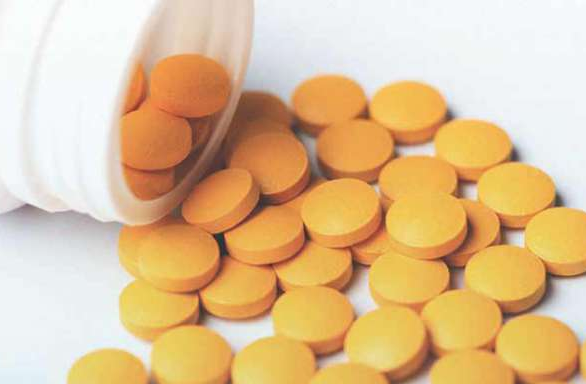
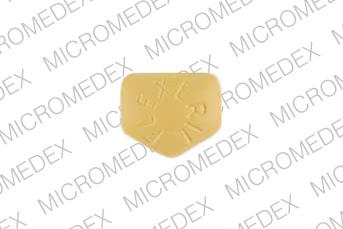
What should I know about storage and disposal of this medication?
Keep this medication in the container it came in, tightly closed, and out of reach of children. Store it at room temperature and away from excess heat and moisture (not in the bathroom). Store the extended-release capsule away from light.
Unneeded medications should be disposed of in special ways to ensure that pets, children, and other people cannot consume them. However, you should not flush this medication down the toilet. Instead, the best way to dispose of your medication is through a medicine take-back program. Talk to your pharmacist or contact your local garbage/recycling department to learn about take-back programs in your community. See the FDA’s Safe Disposal of Medicines website (http://goo.gl/c4Rm4p) for more information if you do not have access to a take-back program.
It is important to keep all medication out of sight and reach of children as many containers (such as weekly pill minders and those for eye drops, creams, patches, and inhalers) are not child-resistant and young children can open them easily. To protect young children from poisoning, always lock safety caps and immediately place the medication in a safe location – one that is up and away and out of their sight and reach. http://www.upandaway.org
In case of emergency/overdose
In case of overdose, call the poison control helpline at 1-800-222-1222. Information is also available online at https://www.poisonhelp.org/help. If the victim has collapsed, had a seizure, has trouble breathing, or can’t be awakened, immediately call emergency services at 911.
Reference:
https://www.ncbi.nlm.nih.gov/books/NBK513362/
https://www.accessdata.fda.gov/drugsatfda_docs/label/2003/017821s045lbl.pdf
https://medlineplus.gov/druginfo/meds/a682514.html
Pain Medications, Pain Relief, and Pain Management
